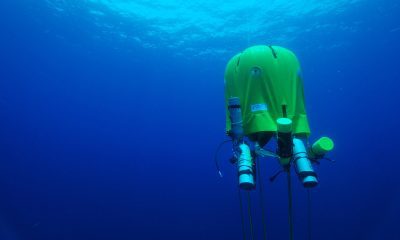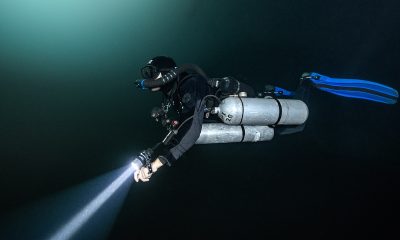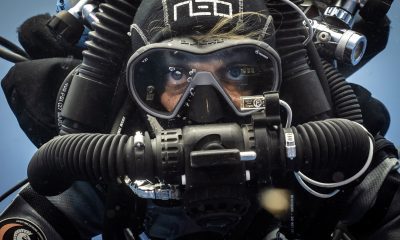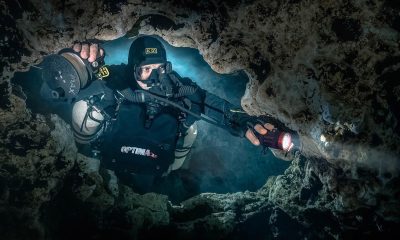

Portable habitats aren’t only for cave diving. They have long been a dream of undersea technologists like Michael Lombardi, whose ocean space habitats were used during...


This month, we continue to explore innovative rebreathers on today’s market with a dive into KISS’s split-canister designed mCCR, the Sidewinder, launched in 2016. Designed to...


Rebreather technology has enabled cave explorers to extend their underwater envelope significantly deeper and longer. As a result, a few teams are pushing beyond the practical...


Launched in 2016, the FATHOM mechanical closed circuit rebreather (mCCR) has gained supporters among deep cave explorers and those distrustful of underwater electronics, who say they...


Forget those ‘leaky valves!’ The mechanical FATHOM CCR’s secret sauce is a specially-designed needle valve that enables divers to dial in their oxygen flow rate underwater...


With helium prices on the rise, and limited or no availability in some regions, we decided to conduct a survey of global GUE instructors and dive...


Launched in early 2020, just as the pandemic was getting started, Dive Rite’s innovative chest-mounted O2Ptima, aka the CHO2ptima, is generating significant buzz among instructors and...


This month we continue our discussion of the migration to closed circuit rebreathers (CCR) and the future of open circuit (OC) scuba for tech diving. Instructor...


By Michael Menduno. Images courtesy of Sean Webb unless noted. There is arguably some confusion in the tech diving community over the advantages and disadvantages of...


by Richard Taylor. Images courtesy of Rob Wilson unless noted. Hindsight can be sobering. Eight years ago, I argued open circuit (OC) technical training was becoming...